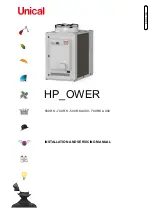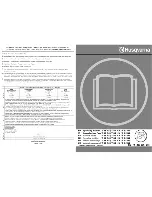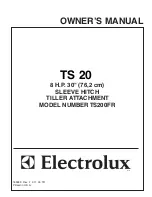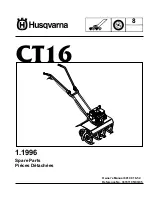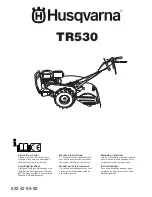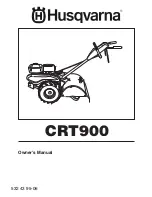
CTV-PRB004-EN
79
Glossary
Phase failure/phase reversal relay
A device that monitors the phase relationship and opens a
contact to stop the compressor motor in the event of
phase failure, phase reversal or phase imbalance.
The advanced motor protection provided by the chiller
controller performs the functions of a phase failure/phase
reversal relay.
Pilot relay
A term describing the fact that all CenTraVac starters start
and stop the compressor by means of a relay that
responds to commands from the CenTraVac control panel.
Push-to-start push-buttons or any other forms of manual
starting of the compressor are not allowed. The CenTraVac
safeties in the control panel must not be bypassed.
Power factor
The ratio of real power (watts) to apparent power (volt-
amperes). Induction motors, such as CenTraVac
compressor motors, require some energy for magnetizing
that does no actual work and is not registered on a
wattmeter.
Power factor correction capacitor (PFCC)
May be used to improve the power factor of a CenTraVac
by furnishing some of the wattless magnetizing energy
required by the motor.
Power factor correction capacitors are a starter option.
They are mounted in or on the starter and are typically
wired to the load side of the compressor contactor. Since
the capacitors are wired in parallel with the motor, the
maximum capacitor size is determined by the motor.
The capacitors furnished as a starter option will correct
the compressor motor to approximately 93.5 to
95.5 percent power factor at full load.
Power wiring
Refer to
Table 11, p. 58
through
Table 16, p. 60
for wire
sizing for line and load wire associated with CenTraVac
starters.
Primary power
The performance number called primary power is the kW
usage at chillers full cooling capacity. The primary power
will always be less than the motor size. See “Motor size in
kilowatts (kW)”,
p. 78
.
Primary RLA
See “Amps, primary rated-load amps (RLA)”,
p. 74
.
R
Rated-load amps or running-load amps (RLA)
See “Amps, primary rated-load amps (RLA)”,
p. 74
.
Relay
An electrically-operated device whose contacts switch
electrical circuits. A relay is always used as a switching
device within a control circuit.
Resistance temperature detector (RTD)
A device whose electrical resistance varies with its
temperature. RTDs may be used to monitor motor
winding temperature.
Every CenTraVac motor has three RTDs buried within its
stator windings. These RTDs are connected to the
CenTraVac control panel. There, a device monitors the
resistance (hence, the temperature) of the RTDs and will
stop the compressor if the motor winding temperature
exceeds a preset level. These are dedicated RTDs and
cannot be used for any additional functions.
If motor winding RTDs are required for any other function,
the RTDs required must be described and ordered as a
design special. Then, a specially built motor will be
provided.
S
Short circuit
An unintentional direct electrical connection from phase-
to-phase or from phase to ground resulting in low
resistance and very high current flow. Short circuits can
result in destruction of conductors and components. Short
circuits are caused by the breakdown of insulation, poor
wiring, or a conductive piece of metal that accidentally
comes in contact with multiple phases or between a
phase and ground (i.e. tools and service equipment). See
“Available fault current (AFC)”,
p. 74
.
Short-circuit current rating (SCCR)
When a short circuit occurs, there is a period of time that
the short-circuit current passes to the shorted circuit
before the protection device (circuit breaker or fuse) can
open. This time can be as long as 0.020 seconds (1 cycle).
The short-circuit current rating of a starter is the maximum
short-circuit current that it can pass safely. Components
within the starter may be destroyed, but the starter
cabinet will safely contain any sparks or flying debris. UL
listed starters have a listed short-circuit current rating.
Short-circuit withstand rating (SCWR)
See “Short-circuit current rating (SCCR),”
p. 79
.
CTV-PRB004.book Page 79 Sunday, December 18, 2011 6:39 PM

























